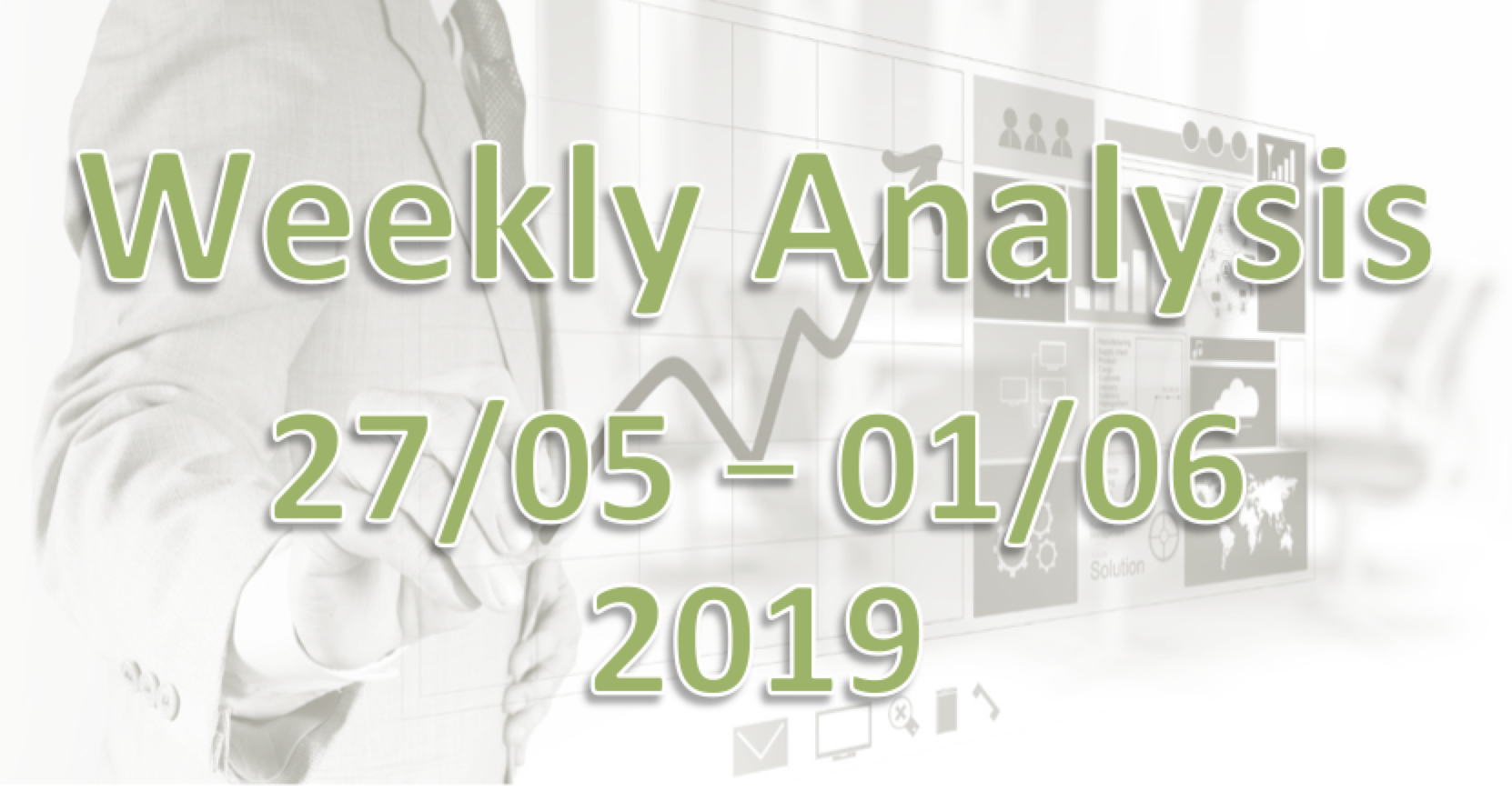On USD/JPY, the rate came back to the middle of the 110 yen range last week, and went back to the lower 109 yen range over the weekend. China has changed to friendly attitude so far, and repeated criticism of the United States, delaying US-China trade talks agreement, broadening the flow of risk aversion from the view that it will be prolonged, falling stock prices and long-term interest rates.
Starting this Saturday, the 25% duty will be imposed $60 billion on US products, which is a retaliatory measure against China that they launched recently. The United States also begun to consider the fourth sanctions duty, which could be triggered at the end of June if the current situation remains unchecked. This is a situation of why it’ said “trade war.”
Last week, IMF announced that global economic growth would fall 0.3% if the US-China trade war intensified and they lowered the global economic outlook last month. In this estimate, it is pointed out that there is a risk that US will use the Chinese company Huawei issue as a trading material, and if the US-China conflict continues, the world growth rate will fall to the limit of “3%,” which is considered to be a slump in recession. The report warns that “the global economic recovery scenario could be jeopardized.”
President Trump, who came to Japan last weekend, is scheduled to have a summit with Prime Minister Abe today. I think that trade issues will not be included in today’s agenda, as they say they will wait until after the July elections, but new concerns have emerged here. The US Department of Commerce has announced that it will review the calculation method of “subsidy offset duty”. The US Department of Commerce is considering taking into account the devaluation of the government’s exchange rate when calculating how much the subsidy is received. Nikkei newspaper, a Japanese newspaper, argues that “Japan has not implemented currency exchange for a long time, but it may narrow the scope of future intervention.”
With the “dark clouds” being embedded in the prospects of the US-China trade talks, the dollar buying has strengthened, and the yen’s appreciation has advanced to ¥ 109.01 on the 13th of May. After that, the market tested the 109 yen break again, but at that point the level is firm and I can avoid the 109 yen break. Now, everything seems to be depended on the whereabouts of the US-China trade problem. It is bit worried that the voltage of criticism from the Chinese side is rising.
Mr. Yi, Huiman, Chairman of the China Securities Regulatory Commission, said on the 25th that the US tariff hike would have a “very limited” impact on China’s economy, even if it was maximized. It will be damaged to the same extent (Bloomberg). The soft texture continued, and EUR/USD tried a rate 1.1 last week, but finally it was pushed back to 1.12 at the last weekend without going below 1.1 and NY The market is closed today, so I think it would be a buy-back of position adjustment.
The Chinese PMI will be announced over this weekend. China’s economy is finally showing signs of bottoming out, but last month’s economic indicators are again showing signs of weakness. PMI is likely to draw attention as concerns over US-China trade issues rise.

